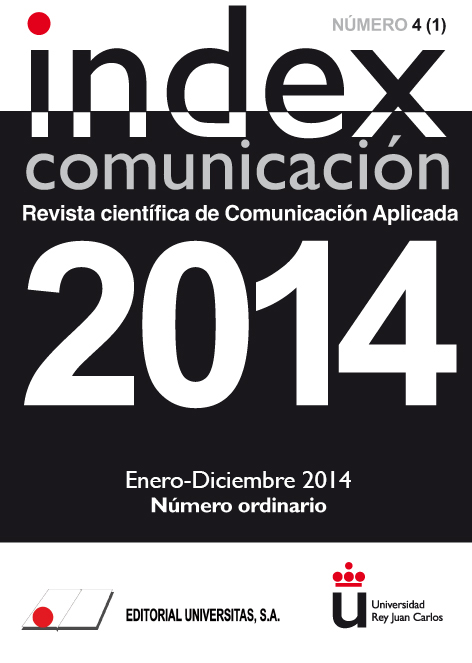Situationist International a Precursor Movement of Performance Art
Keywords:
psicogeografía, détournement, sociedad del espectáculo, letrismoAbstract
The great sin of this movement known as the Situationist International, was trying to destroy the established order, the simulation of our reality, constructed and manipulated through the information media. Inclusive, from its origins in the 1940´s decade, this movement like no one other contemplates all forms of creation: plastic, theater, performance, film, photography, literature, poesy, dealing with politics, moral and life itself. Its ideological concepts, elaborated in a clear way in its numerous texts, denounce the brutal alienation that the society of consumption produces, putting a series of strategies to liberate the individual, basis that go around in the creation of situations. The situations were ephemeral acts, authentic, one in a lifetime and because of that, impossible to commercialized. One of these situations, was the action against the assembly of international art´s critics in 1958. The general situations generated inside the movement, setting the foundation to name the term Performance Art in the 1970´s decade.Metrics
References
Amorós, M. (2004): ‘Tecnología y disolución de clases’ en Las Armas de la crítica. Bilbao: Likiniano elkartea, p. 40.
Aznar Almazán, S. (2000): El arte de acción. 2ª ed., San Sebastián: Nerea.
Battock, Gregory y Nickas, Robert (1984): The Art of Performance: A Critical Anthology. New York: Plume; 1ª ed.
Baudrillard, J. (2009): La sociedad de consumo. Traducción, Alcira Bixio. Madrid: Siglo xxi.
Carlson, Marvin (2003): Performance: A Critical Introduction. 2ª ed., New York, London: Routledge.
De Vicente, C. (1999): Discurso sobre la vida posible. Textos situacionistas sobre la vida cotidiana. Hondarribia: HIRU, S.L. Colección Sediciones nº 11.
Debord, G. (2006): Society of the Spectacle. Ken Knabb (traductor). New York: AK Press.
Ford, S. (2004): The Situationist International: An Introduction. USA: Black Dog.
Goldberg, R. (2004): Performance Art. Live Art since the 60s. New York: Thames and Hudson.
Home, S. (1996): What is Situationism?. Edimburgo: A Reader, AK Press.
Home, S. (2002): El Asalto a la Cultura. Corrientes utópicas desde el Letrismo a la Class War. Bilbao: Editorial Virus.
Knabb, K. (2007): Situationist International Anthology. USA: Bureau of Public Secrets; Revised & Expanded Edition.
Kotányi, A. y Veneigem, R. (2001): “Programa elemental de la oficina de urbanismo unitario”, en Internacional Situacionista. Textos completos en castellano de la revista Internationale Situationniste (1958-1969). Vol. 1. La realización del arte, pp. 211-213.
McDonough, T. (2004): Guy Debord and the Situationist International: Texts and Documents. USA: The MIT Press.
Nieuwenhuys, C. (2001): “Otra ciudad para otra vida”, Internacional Situacionista. Textos completos en castellano de la revista Internationale Situationniste (1958-1969), Vol. 1. La realización del arte. Madrid: Literatura gris, pp. 106-109.
Phelan, P. (2001): Unmarked: The Politics of Performance. USA, Canada: Routledge.
Tarcisio, E. (2001): Con el cuerpo por delante: 47882 minutos de performance. México: Ex Teresa/INBA.
Turner, V. (1986): The antropology of perfomance. New York: PAJ Publication.
Vaneigem, R. (1999): “Aviso a los civilizados con respecto a la autogestión generalizada”, Internacional Situacionista. Textos completos en castellano de la revista Internationale Situationniste (1958-1969). Vol. 3. La práctica de la teoría, pp. 600-606.
Vienet, R. (1999): “Los situacionistas y las nuevas formas de acción en la política y el arte”, Internacional Situacionista. Textos completos en castellano de la revista Internationale Situationniste (1958-1969). Vol. 3. La práctica de la teoría. pp. 494-496.
VV. AA. (2007): La Revolución del arte moderno y el moderno arte de la revolución: Sección inglesa de la Internacional Situacionista. 2ª ed. Pepitas de Calabaza.
Zerpa, Carlos (2005): Lo que vi, lo que escuché, lo que viví, lo que rozó mi piel en Alcázar, J. y Fuentes, F. (2005): Performance y Arte-Acción en América Latina. México: Citro. Ex Teresa. Ediciones sin Nombre.
Downloads
Published
How to Cite
Issue
Section
License
Authors who submit to this journal agree to the following terms:
Authors retain copyright and ensure the magazine's right to be the first publication of the work as licensed under a Creative Commons Attribution-NoComercial 4.0 International License that allows others to share the work with an acknowledgment of authorship of the work and the initial publication in this magazine, with no commercial purpose.
Authors can establish separate additional agreements for non-exclusive distribution of the version of the work published in the magazine (for example, to an institutional repository or publish it in a book), with an acknowledgment of its initial publication in this journal.
It allows and authors are encouraged to disseminate their work electronically (eg, in institutional repositories or on their own website) prior to and during the submission process, as it can lead to productive exchanges, as well as a citation more early and most of the published work (See The Effect of Open Access).















